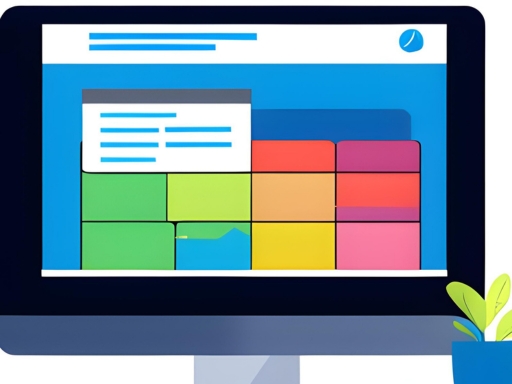According to GoRemotely, the average employee is productive for just under 3 hours each workday. is productive for 2 hours and 53 minutes daily. That doesn’t mean your employees are lazy; it may have everything to do with the working styles prevalent in your workforce. If your team members aren’t maximizing their time and energy the right way, it could be causing a productivity crisis that’s impacting your bottom line.
Whether you have fully remote, hybrid, or in-office employees, their preferred working style is a good starting point for addressing productivity. Unfortunately, different working styles are available, and each team member could have their preferences. How do you ensure you pick from the various working styles that fit your work environment and culture?
What Are Working Styles?
A working style is how you prefer to work, solve problems, and work with team members.
Most — but not all — working styles are consistent with various personality traits. Your personality impacts how you work and deal with team members and your natural abilities.
Now, that can get a bit complicated. There are potentially hundreds of personality traits. The list is extensive enough that psychologists whittled the list down to what’s known as the “Big Five” trait factors. These include:
- Surgency or Extroversion
- Agreeableness or Pleasantness
- Conscientiousness or Dependability
- Emotional Stability or Neuroticism
- Openness
BetterHelp offers an extensive breakdown of the different characteristics of each of these. Understanding these differences can help you better understand your team (or yourself) and zero in on the work styles you’re dealing with.
For example, someone who falls into the “Openness” trait factor is likely to express lots of originality, cleverness, and curiosity. That individual will likely fall into the “Idea Oriented” working style mentioned below.
Work styles apply to your attitude toward work and other members of the same organization, whether or not you must work directly with them.
Why Do We Need to Identify Each Employee’s Working Style?
Identifying your work style is critical because it helps you or your team members advance career goals and facilitates career advancement.
The 17th-century cleric John Donne coined a phrase often turned to in organizational settings:
“No man is an island.”
While some people excel individually, in a business setting, we must typically work with others to reach our career goals. Working with others requires working to our strengths and managing our weaknesses.
But unless we identify those strengths and weaknesses in how we work, we can’t make the necessary changes that facilitate moving your career forward. Self-awareness is the first step to knowing our working style and maximizing it. Identifying the various work styles also brings harmony into the workplace and creates a positive work culture.
For organizational leaders, that’s an essential strategy for fostering a stronger work ethic and boosting productivity. When people work in a way that’s counterproductive to their personality, they’re not likely to be as productive as they could be. But when you better understand their personality and best-fit work styles, you can create better teams and improve outcomes.
6 Common Working Styles
Not everyone works the same way, which explains why various working styles fit each work environment and culture. A crucial step toward better productivity is understanding why different work styles exist.
But remember, these aren’t boxes where you must try to fit each team member in. Instead, acknowledge that some team members might prefer combining work styles to suit different personality traits. Maintaining a flexible approach when adopting a working style is crucial to making your workers thrive.
Logical Working Style 🤯
The logical work style refers to an employee who prefers to do things in a straightforward manner. They like taking a logical approach to each task and often like to act independently. Employees who prefer the logical working style look to analyze each task or problem and tackle them head-on.
This work style has a linear approach to managing each task. It is ideal for detail-oriented team members. Because of this, workers thrive in tasks where they deal with data sets and where they can perform analytical thinking.
Logical team members can be hyper-focused when they intend to complete a particular task because they want to get things done.
This working style does have its downsides, though. Since logical workers tend to act independently, their communication style may need some improvement. Therefore, it’s something to work on when dealing with logical team members in your organization.
Detail Oriented Working Style 🧐

A detailed oriented working style refers to team members with an eye for detail. They like staying on top of their assigned tasks because they want to ensure that even the small details are not overlooked. Using the detail-oriented work style approach at work benefits everyone because they help bring order and stability into the organization.
Having detail-oriented people in your team is also an asset because they like to strategize and plan. They focus on maximising efficiency, which is why they ensure all details are considered when executing any plans or activities.
My colleague Laura Francis comes to mind here. If organizational skills were a superpower, those Avengers: End Game reinforcements against Thanos would have actually been on time.
The downside for some (but not all) employees who have a detail oriented working style is that they can easily be overwhelmed when they have to handle a higher-than-average workload. Since they spend more time tackling each task, a larger number of responsibilities can easily overwhelm them. There is also the risk that the detail oriented team members can fail to execute their plans as they thrive on theory instead of action.
Supportive Working Style 🤝
A supportive working style is one of the best work styles for your organization. It addresses the lack of emotional support in a typical work environment. A supportive work style fosters collaboration, teamwork, and harmony in the work environment. Having supportive team members in your organization also promotes building relationships while allowing you to solve problems.
Team members who prefer a supportive working style are also called team players. They are ideal for leadership roles because they have strong emotional intelligence and self-awareness. They thrive in situations where they must provide support to team members and are sensitive to the feelings of their fellow team members.
Supportive team members are, in effect, good communicators and serve as the glue that brings together the main working styles.
Idea Oriented Working Style 💡
Another personal trait that is suited for potential leaders is idea-oriented individuals. When someone is idea oriented, this work style suits them because they like having a vision and inspiring others to work toward that vision. Simply put, they are big-picture thinkers and are excited by new ideas. They also produce creative ideas, especially within a supportive work environment.
Idea oriented individuals also prefer this working style because they see opportunities in every obstacle. But unlike most leaders, idea oriented people like to take risks. For this reason, many current leaders adopt this particular work style.
Your idea oriented team members can (but again, not always) create problems for the organization if left unchecked. For example, they can be highly focused and energized about the big picture, to the detriment of small details. Neglecting their team members is possible as they can get caught up in chasing creative ideas and various opportunities.
Cooperative Working Style 🏃♀️🏃♂️🏃♀️
Cooperative working styles work best for individuals who are natural team players. Cooperative team members are workers who value building relationships with their team members. They thrive in tasks that involve collaboration and easily fit into any role designated to them.
Cooperative team members willingly jump on any project where they can express themselves and be a part of a team.
However, a potential downside to the cooperative work style may arise among some employees. They are so dependent on working with a group that they might struggle when they must work on new projects independently.
Proximity Working Style 👨🏻🤝👨🏾
Proximity working styles are one of few that are present in all aspects of business. It sits between the cooperative work style and those team members who prefer to maintain independence. For this reason, individuals who prefer proximity working styles work well in a group but can also thrive in individual tasks.
The proximity working style is a dream scenario for many leaders. It delivers the best of both worlds because of its versatility and adaptability, making it ideal for high productivity.
Benefits of Understanding Your Working Style
Understanding the different work styles and their potential impact on your organization is an important step to improving team productivity. When you identify the different personality traits you have in your team, you get a better understanding of how those team members may prefer to work and what working style makes them the most productive.
So what can you see happen across your team once you reorient your team around working styles?
Improved Productivity
All organizations want to be productive. But often, barriers to productivity exist within your team. Therefore, you must dig deep into each team member to analyze and understand different personalities and their corresponding traits.
Some organizations conduct personality tests during the hiring process for this reason. They want to understand better the work style and habits of the potential new hire to determine if it works well with the existing organizational dynamic and needs.
But identifying the different working styles is only the first step to attaining productivity. It is what you do with that knowledge that really matters.

No matter what your company’s culture might be, you are only as productive as your ability to utilize your team members’ skills and full potential. Working style is one of the various factors that enable employees to thrive in any workplace situation or work environment.
The Peter Principle is a good example of how knowing the various working styles can facilitate (or limit) productivity. Traditionally, employers would neglect their employees’ preferred working style. As a result, many team members are forced to adopt a work style that does not allow them to excel or the workers to thrive.
Enhanced Collaboration
As mentioned, different personalities can exist within the same organization. Each personality type will have varying work style preferences. Knowing these working styles and using them to inform how you build an appropriate work environment for everyone can facilitate ease of collaboration. It encourages each team member to work in a way that would make them feel most comfortable and efficient. It also creates an environment and working culture that allows everyone to thrive.
Better Work-Life Balance
Work-life balance benefits the organization and its employees. But how does this happen?
- Understanding the personal work style of each team member allows them to harness their natural abilities and maximize their potential.
- Harnessing each team member’s strengths means they thrive and are more satisfied or engaged in that work environment. They feel less burnout at work because they enjoy their work style, allowing them to grow personally and professionally.
The more productive your team members become, the less time you (and they) have to perform work beyond the required hours. It creates a healthy working environment wherein you can respect everyone’s boundaries of time in maintaining a healthy work-life balance without sacrificing productivity.
4 Steps to Develop Your Working Style
Knowing the different working styles can be easy, but it’s complicated when you have to develop a working style for your team or as an individual team member. A considerable gap exists between how you prefer to work and how you should get things done. They’re not always the same thing, but you have to strike a balance between the two.
Step 1: Assess how you’ve worked before
The best way to predict the future is to analyze the past. Like Doctor Strange, you and your team need to examine the past to understand the how it influences the way you work now, and how you can or should work in the future.
Using historical or experiential data can help you make informed decisions about your team’s strengths moving forward.
- What work styles have you adopted before?
- How productive were you at those working styles?
Consider your productivity level and overall satisfaction with the approach. Use those answers to help you pick a working and project management style that is right for you or the organization.
Step 2: Evaluate your current working style
Even if your team members haevn’t haven’t considered it, they may have instinctively adopted a work style that may or may not be effective. Pause and assess how your team currently works. It could explain the big picture of what is and isn’t working for your team.
If you must, have your team members identify the work style they think they’ve adopted. And have everyone the team identify the work style they think their fellow teammates have adopted. Does everything line up, or are there discrepancies?
We conducted a similar experiment among our Marketing team at MentorcliQ. It was instructive in helping us better understand each other, how we perceive ourselves, and how our teammates perceive us. Notably, none of the work styles are bad or negative. Each has its own benefits. As such, this type of exercise does not (or should not) cause hurt feelings and divisions.
Step 3: Consider a mentorship program
A mentorship program is another technique to help your and your team develop more effective working styles. When your team members work closely with a mentor, they can get better perspective on their working style through the eyes of someone who can help them refine that style in new ways.
This inclusive experience broadens your team members’ perspectives about a working style that could differ from what they’ve adopted.
Another way to utilize mentorship is to seek feedback from a mentor about strengths and weaknesses. Mentors can use their experience to help team members self-assess, learn new work habits, and adopt new work styles and habits that make them more productive and successful.
Step 4: Take a personality test
A thorough self-assessment through personality tests can help inform your choice of the best work style that fits your personality. These tests provide insight into your communication style, preferences, and tendencies. You can use this result to understand a work style that makes you comfortable and productive. Another way to do this is to solicit feedback from fellow team members about how you work and use that to develop a working style.
There’s no end to the personality tests one could take. The most popular tests include:
You’ve likely heard of at least one of these (Myers-Briggs). All are useful in their own way. The Values and Motives Inventory, in particular, may be useful as it has direct applications to workplace satisfaction.
Make Room for Altering Your Working Style
Diversity is encouraged and celebrated in the modern workplace. That does, and should always include, making space for different working styles. Nevertheless, not all working styles lead to the kind of results companies need. And sometimes, employees may need to adopt a new style, or adapt to using a new one to be more productive.
Don’t expect your team members to simply adopt or adapt in a bubble. Offering them training or a mentor that can make the difference for them, and for you.
See how that difference looks by checking out mentoring software with automated, algorithm-based matching.




